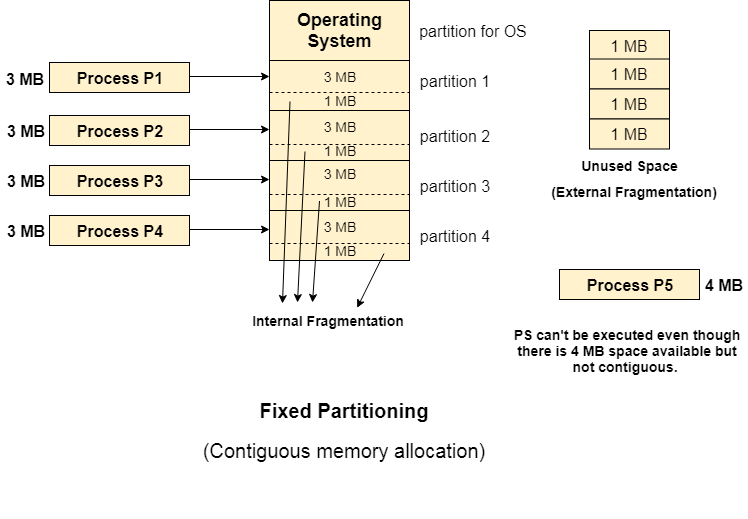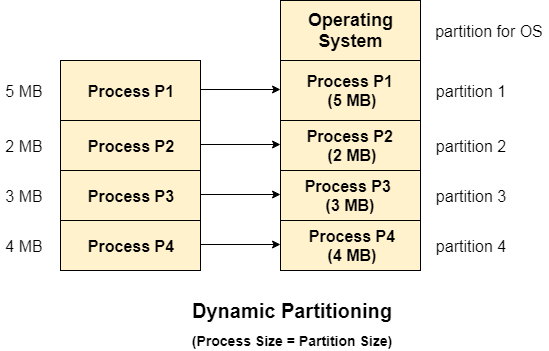Memory Management

What is MFT
The earliest and one of the simplest technique which can be used to load more than one processes into the main memory is Fixed partitioning or Contiguous memory allocation.
In this technique, the main memory is divided into partitions of equal or different sizes. The operating system always resides in the first partition while the other partitions can be used to store user processes. The memory is assigned to the processes in contiguous way.
In fixed partitioning, the partitions cannot overlap. A process must be contiguously present in a partition for the execution.
Click here to learn more about MFT Click here to simulate MFT

What is MVT?
Dynamic partitioning tries to overcome the problems caused by fixed partitioning. In this technique, the partition size is not declared initially. It is declared at the time of process loading.
The first partition is reserved for the operating system. The remaining space is divided into parts. The size of each partition will be equal to the size of the process. The partition size varies according to the need of the process so that the internal fragmentation can be avoided.
Given the fact that the partitions in dynamic partitioning are created according to the need of the process, It is clear that there will not be any internal fragmentation because there will not be any unused remaining space in the partition.
Click here to learn more about MVT Click here to simulate MVT
